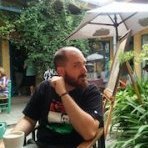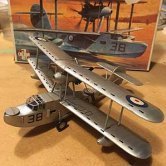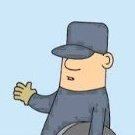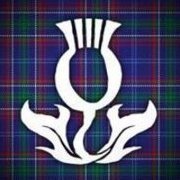-
Posts
201 -
Joined
-
Last visited
Profile Information
-
Gender
Male
-
Location
France
-
Interests
WWII or Korea era piston airplanes, 1/48 scale
Recent Profile Visitors
3,108 profile views
cger's Achievements

Established Member (3/9)
1.7k
Reputation
-
hi guys, the project got stalled for some weeks, but I managed to finish it a week ago. There is not much to say about the assembly (very few parts) and painting, done with Gunze and Tamiya acrylics. I made a small polystyrène base to display the kit. The pine tree was one of my first attempts at making this type of trees, I followed some Youtube channels devoted to railways modelling. Another new technique that I tried is to use Greenstuff to modify figures: the pilot on the wings is made with Tamiya figures, modified to represent the fur lined flight coat used by the Germans in 1945. I found it much easier to use than Tamiya epoxy putty. Here are some pictures: I added two solid fuel rockets to the undersides. Since this plane existed just on paper, I copied the rockets found on the Bachem Natter rocket plane. Have a nice Sunday, Christian.
-
Hi, here are some pictures of the progress: the detail in the cockpit is very scarce, so I added framing from Evergreen strips and various plastic bits from my spare box: Painting is done with a mix of Gunze paints to replicate RLM 66, the details are done with Vallejo acrylics. Next a picture of the cart. I changed its shape to be able to hook it up to a small truck. Again the paint is done with a mix of Gunze and Tamiya acrylics. I tried to replicate soldering marks with stretched sprue. Finally here is the truck that will tow the transport cart. I bought it and built it long ago, I do not remember the brand, which was an Ukrainian company. I added coal bags on the back. The bags are done with Milliput, the coal with HO scale ballast tinted with black pigment and with graphite powder. Black pigment was also used to dirty up the coal bags. Have a nice afternoon, Christian.
-
Good evening, I start the build of the Lippisch P13a from Revell in 1/48 scale ( a reboxing of the Mauve kit). Since this is a purely paper plane, I allowed myself a little uchronic delusion. I decided to build the first production version of the Lippisch P13, the P13C, which reached the frontline units in January 1946. The previous P13B preproduction version was plagued by many teething problems, among them the leaks of carbon monoxid gas in the cockpit, which caused the loss of many pilots before a solution was found. The P13C differed also from the P13B by the addition of an ejection seat, necessary because of the high speeds that the P13 was able to reach. The planned top speed of 1600 km/h was never achieved, because of the overly thick wing profile, and the P13C top speed was only 850 km/h. Another difference with the P13B was the armament of two MG 151/20 instead of two MK 108. In fact large numbers of MG 151 were still available, and the Mk 108 slow initial velocity and firing rate was not adapted to the fast closing speeds of the P13. The P13C main advantage was that it was very easy to fly, even by a pilot with less than 20 flying hours. Moreover its fuel was made of compressed coal powder (hence its nickname 'der fliegenden Kohleofen' or flying coal oven) and the Luftwaffe was able to field a considerable number of P13's. In fact the allied bombing campaign against german hydrogenation plants did not affect the coal production. Finally the P13 was able to take off with two solid fuel rocket pods from small and easy to hide platforms, and could land on its reinforced belly on virtually any flat grass field. With the Lippisch P13, the Luftwaffe had at last a functional Volksjäger, which quickly replaced the ill fated He 162. The P13 equipped Gruppe were concentrated around Brandenburg region, to protect Berlin from the continuous USAAF raids of B 29s and B 32s, forcing the 8th Air Force to shift to night bombing missions after March 1946. The build will start with the riveting of the surfaces and the construction of the cart. see you soon for some pictures ! have a nice evening, Christian.
-
To speed up the drying time of oil paints, you can use a siccative. It can be found in stores selling products for artists, or in the modeller world, VMS sells it under the name VMS Oil Expert. I did some wood grain imitation many years ago, but do not remember having problems with dust particles. Maybe you could cover your model to keep dust away while the paint is drying ? best, Christian.
-
I too had several bottles of Ammo PLW turn bad. Now I use only artist oil paints for washes and filters , it flows much better, has more choice of colors, and can be reworked for several hours (even days sometimes). So my Ammo bottles stay on their shelf ... Christian.
-
there is a black PLW, called PLW Black Night ref 1611. I suspect Enamel washes are the same as Panel Line Washes, only less diluted. If needed you can use cotton buds slightly soaked in enamel thinner to clean the excess, best, Christian.
-
yes, I do not understand why Italeri did not provide the decals for the whole firewall, only for the upper part, best, Christian.
-
Thanks Noel for the kind comments. Yes the Italeri kit is not so expensive (I payed around 150€ for it), certainly much less than the MFH offering. I do not know the quality of the other 1/12 racing cars kits from Italeri (I think there is a Fiat and an Alfa Romeo), but I suspect that they are quite old (dating from the 1970 !). The Italeri kit is not top notch (for example if you compare it with Tamiya), but still very good, have a nice day, Christian.
-
many thanks for the kind words. It was something completely new for me to work is such a large scale. I can explain the method for the exhaust pipes, it is really not difficult: I started with several light coats of Tamiya XF69 Nato black, XF 79 Lino Deck brown and XF 9 Hull red. On top of that I used burnt sienna and burnt umber oil paint washes. Finally I reproduced the whitish chips using foam with Vallejo Silver Grey. best, Christian.
-
thanks guys for the kind comments. You are right about the rims and radiator, they should be weathered too. I will go over them again with oil paints and pigments, best, Christian
-
cger started following Bf 109 F2 Eduard 1/48 and Bugatti 35 Italeri 1/12
-
Hi all, I post some pictures of my last build. I usually build airplanes (with some armor), only in 1/48 scale. To change a bit my habits (and to please my grandson who is fond of cars !) I started to build the Bugatti 35 kit by Italeri. It is a very nice kit, with very good details and decals. I choose the car driven by Louis Chiron at the 1930 Monaco GP. 1/12 scale is pretty big, so one needs to change a little the painting technique. I painted the engine and radiator with Alclad. The copper and brass is done with Vallejo Copper and Liquid Gold, which are quite nice. The brushed aluminium comes from the kit decals, I found the outcome very nice. I painted the body with Gunze H45 and used oil paints, inks and pigments for the weathering. The leather piece designed to protect the pilot from the wind entering below the windscreen was done with Tamiya epoxy putty, painted with oils and inks. I hope you will like the pictures, I wish you a nice sunday, Christian.
- 29 replies
-
- 45
-

-
thanks guys for the kind comments To give more details on airbrushing oil paints, note that oil paints dry very slowly. I speed up the drying by thinning them with VMS Oil Expert. Note also that one can get completely equivalent results by simpler methods, either by airbrushing acrylics (Tamiya or Gunze work fine) or with Tamiya weathering sets. The advantage of oil paints is that they can be erased easily with mineral spirits if you are not happy with the results. Of course this assumes that the undercoat of paints is acrylic, best, Christian.
-
Hello gentlemen, I post some pictures of one of my late relaxing builds, a BF 109 F2 flown by Hans Philipp in spring 1942. The scheme is among those of the Profipack boxing from Eduard that was offered at a discount price some months ago. The Friedrich is in my opinion the best looking version of the 109. I started with a classic RLM 76 lower and RLM 74/75 upper camo, using Gunze Aqueous paints. To depict the white overcoat, I used AK 3rd generation washable white. I was a bit disappointed with it, as it did not wash out easily, I had to scrub quite a lot with a short bristle paintbrush. Nevertheless at the end the white coat looks like the one in the pictures of Hans Philipp's plane. Another new trick that I used is to apply asphalt oil paint with my airbrush to make the exhaust stains. One has to use several very light coats but at the end it reproduce the kind of oily black brown shade that I was looking for. Here are the pictures, I hope you will like them, have a nice day, Christian.
- 9 replies
-
- 45
-

-

-
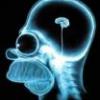
A pair of late war Bf 109 in 1/48 scale
cger replied to cger's topic in Ready for Inspection - Aircraft
Hi Penguin, many thanks for the comments. I am no expert either. The red undercarriage and wheels indicated the use of C3 fuel, from what I have read. I used Gunze Aqueous H414 RLM23 color to paint them, have a nice day, Christian. -

A pair of late war Bf 109 in 1/48 scale
cger replied to cger's topic in Ready for Inspection - Aircraft
Hi guys, many thanks for the kind words, have a nice day ! Christian.


